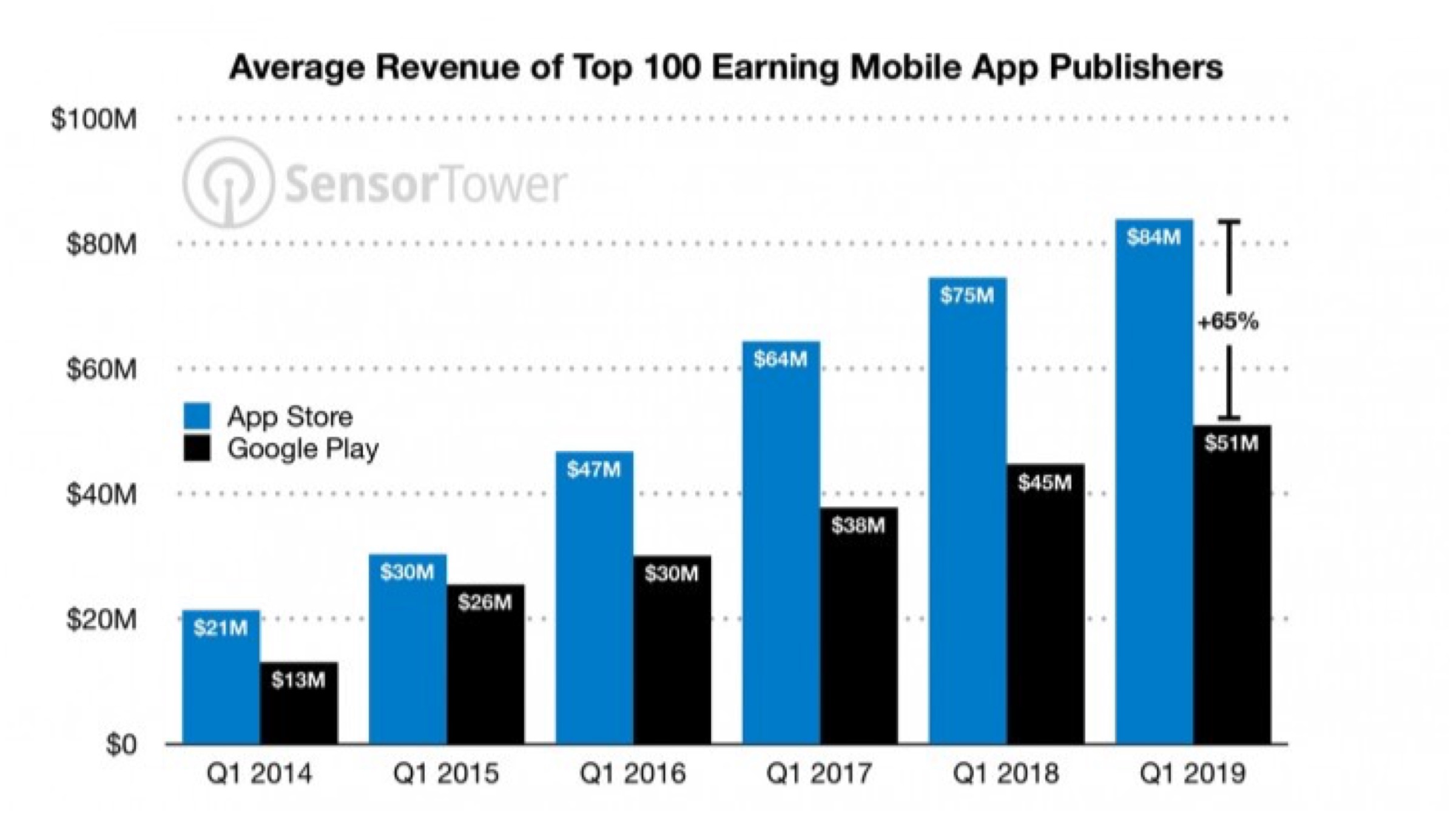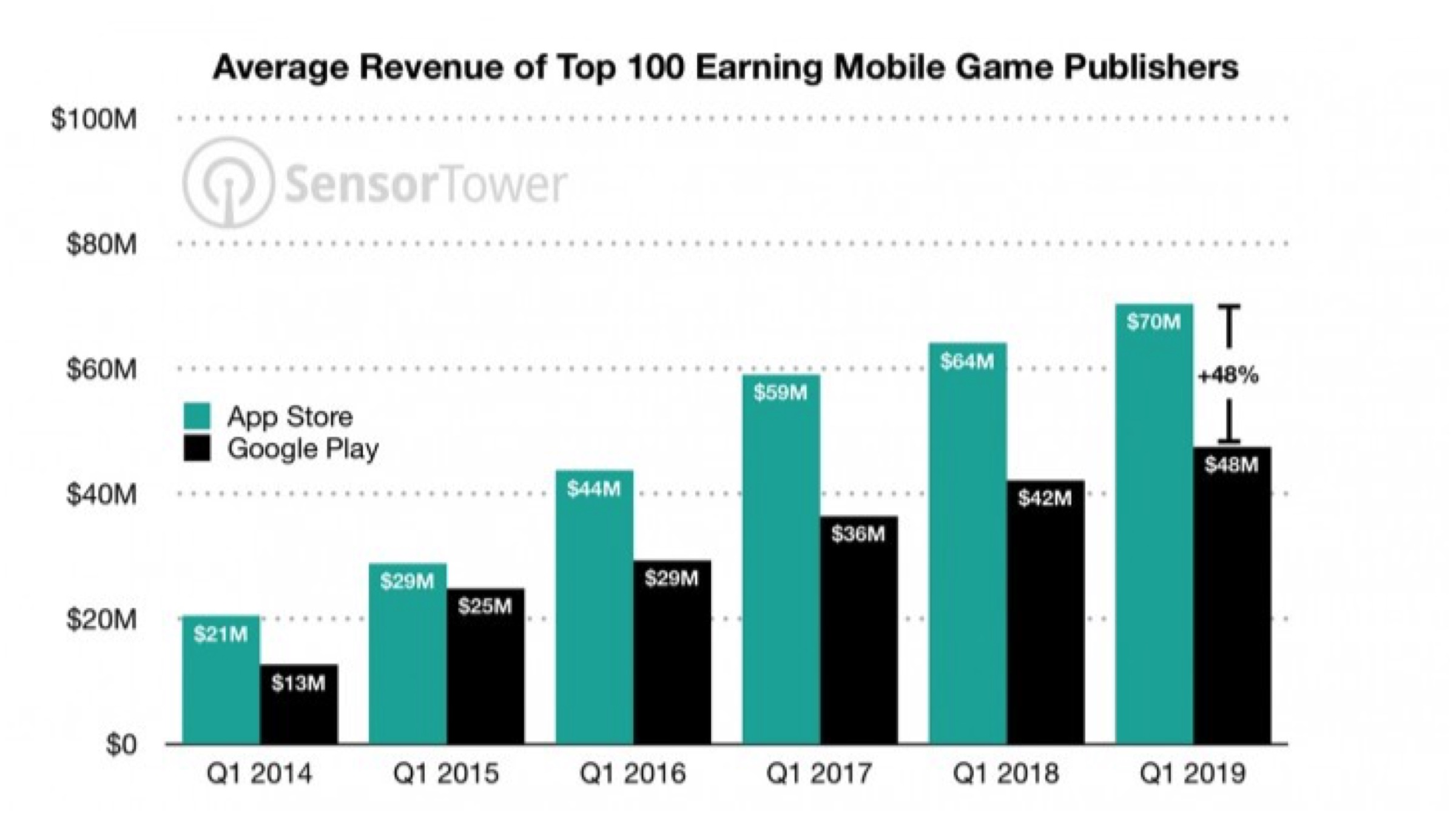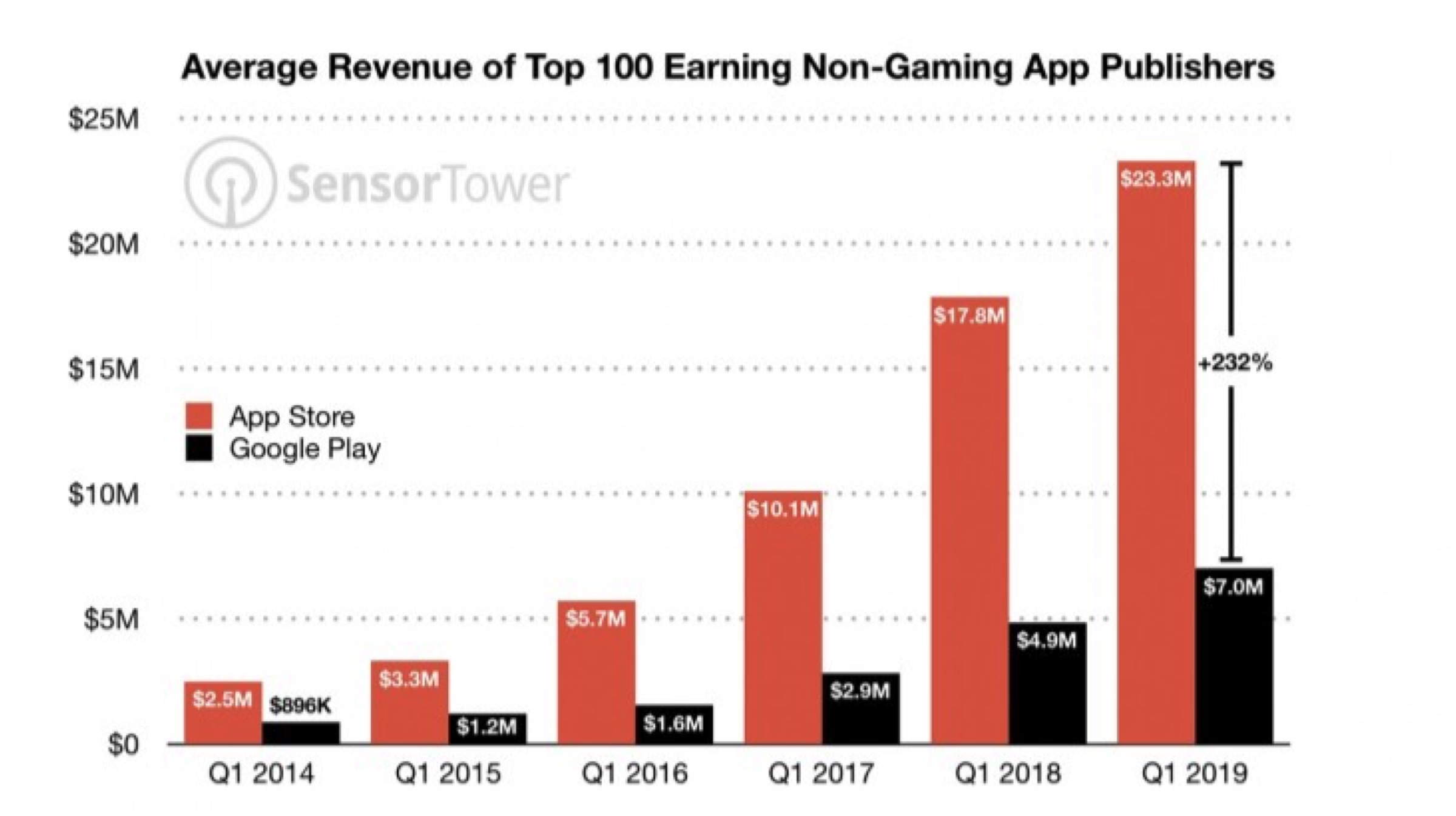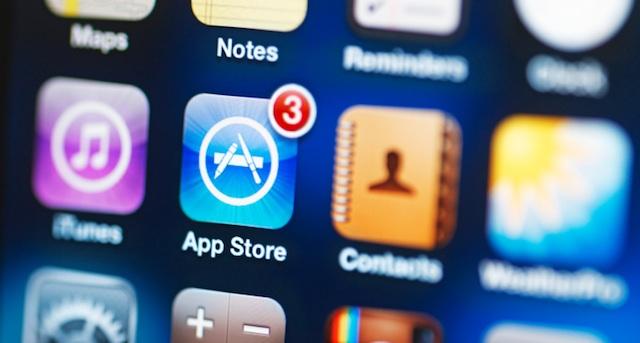According to a new report by Sensor Tower research group, a significant gap was observed in the revenues generated between iOS and Android app publishers. This income disparity was noticeable by a large margin. In Q1 of 2019, the top 100 application developers for Apple’s App Store on an average earned 64% higher than its Android counterpart Google Play.

Sensor Tower’s Store Intelligence uncovered App Store publishers earning an estimated amount of $83.8 million (approx. Rs.584 crores), whilst Android studios only garnered $51 million (approx. Rs. 355 crores). This survey was taken over the top 100 apps the Apple and Google platform. Both of these platforms have seen an annual growth of 12% from last years figures.
Gaming Apps

In the field of mobile gaming, the revenue gap was much smaller. However, App Store developers still held a large margin of lead with 48% over Android mobile game studios. Apple’s platform under this segment made $70 million (approx. Rs. 487 crores) to Play Stores $48 million (approx. Rs. 334 crores). This segment of gaming combined is still the largest revenue stream for the industry with the rise in popularity of mobile gaming.
Non-Gaming Apps

Furthermore, non-gaming apps paint a grim picture for Android. The gap between the App Store and Google Play app publishers is a massive 232% difference. Users from Apple spent an estimated $23.3 million (approx. Rs. 162 crores) in comparison to Android’s mere $7 million (approx. Rs. 49 crores). There is a revenue discrepancy of more than three folds. Notably, Apple does have a great advantage considering that Google services and Play apps are banned in China, the largest consumer of smartphone services

Also Read: Apple Recalls Older MacBook Pro Citing Battery Hazards
This essentially makes App Store a more profitable business venture regardless of the fact that Android is the more popular platform. It is reported that Android currently holds an estimated 75% of the OS market share whilst iOS holds just about 23%. Hence, although it should’ve been the other way around, various factors such as user preferences, demographics, and availability should be taken into consideration.

Leave a Reply